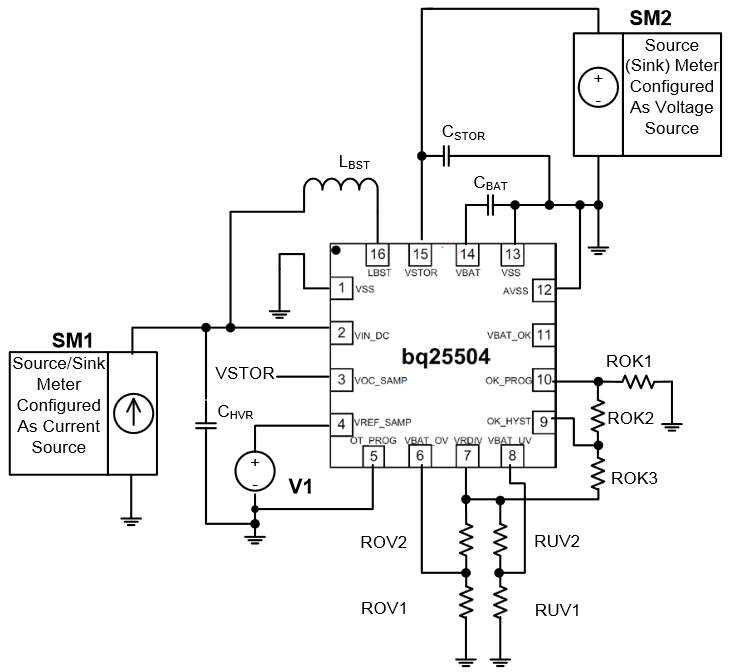Application Report SLUA691
July 2013
Jeff Falin
This application note explains how the data for the bq25504 data sheet efficiency curves was measured.
Efficiency for output voltage regulating power supplies (that is, ac/dc or dc/dc converters) is typically reported as efficiency vs. load current for a given fixed output voltage and input voltage. The power source to these supplies has an impedance that is significantly lower than that of the converter. Energy harvesting ICs, like the bq25504, take power from sources with output impedances that are relatively higher and that vary with environmental conditions. Therefore, the bq25504 has a circuit that regulates its input voltage to a pre-determined level in order to prevent the source from collapsing while charging the attached storage element (that is, a battery) or during times of excessive resistive load by the system. Called the maximum power point tracking (MPPT) circuit, this circuit extracts the maximum power from the source and delivers as much power as possible to the capacitor on the VSTOR output and any system load. Any additional system load demands must come from the bq25504 attached storage element. Reporting efficiency vs. fixed output load current does not accurately reflect an input voltage regulating energy harvester's optimized state of operation. Hence, energy harvesting ICs, like the bq25504, report efficiency vs. input current for a fixed output voltage and input voltage or efficiency vs. input voltage for a fixed output voltage and input current without a battery attached.
Download Application Report SLUA691 (185 Kb)

Click to enlarge
Bq25504 Efficiency measurement
